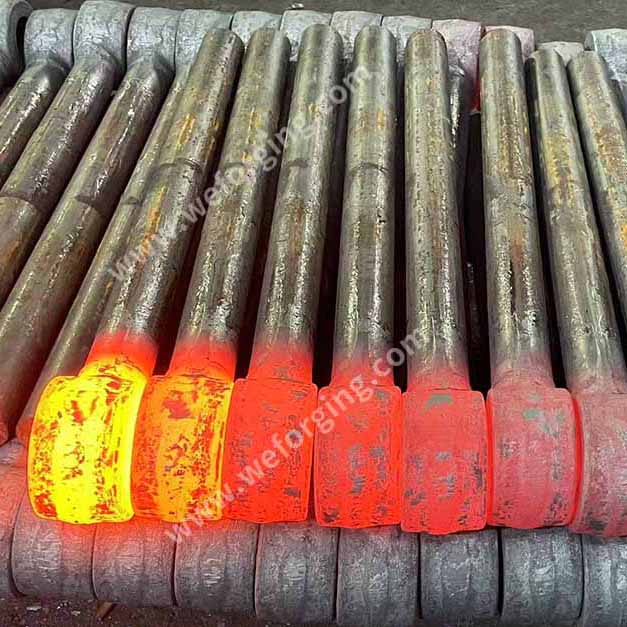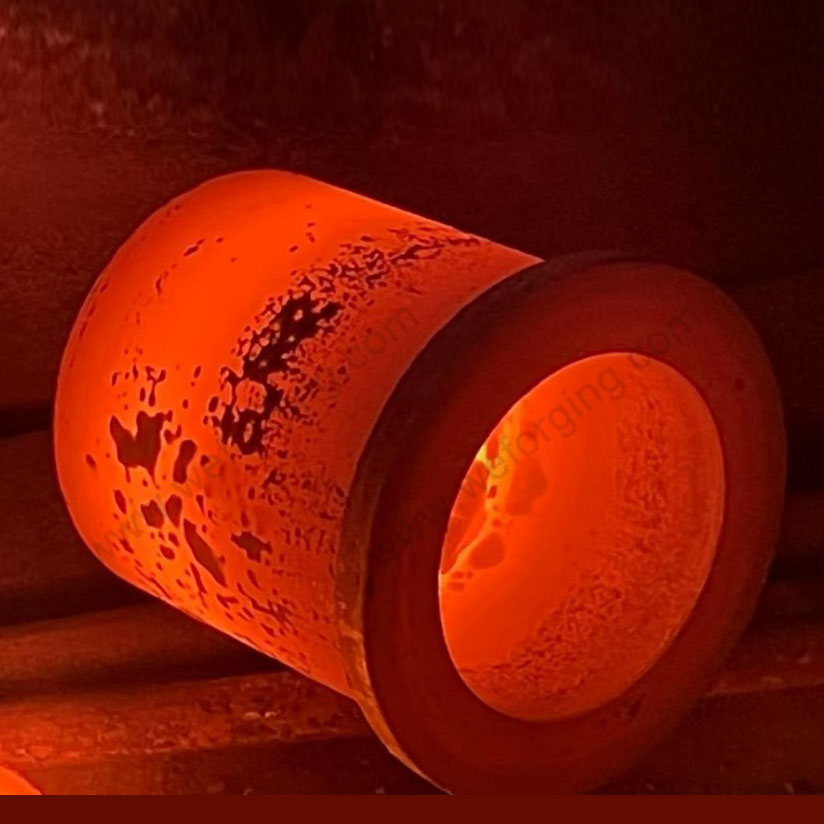Forjamento a quente e forjamento a frio
Em primeiro lugar, os principais tipos de processos de conformação de metais
Metal forming process can be divided into the following categories:
1.1 Forging: Forging: After the round steel lower bar is added to the medium frequency, the metal blank is subjected to pressure by forging equipment to make it plastic deformation, which can be divided into free forging, die forging and ring forging.
1.2 Casting: Molten metal is poured into the mold for solidification and forming, such as lost wax casting, sand casting, die casting, etc.
1.3 Stamping: The die is used to apply pressure on the plate and cut (sheet metal) according to a certain mold shape.
1.4 Cold Extrusion: The metal billet can physically deform in the mold through the combination of the oil press and the mold (tool type hexagonal wrench).
1.5 Rolling (Rolling) : metal continuous deformation through the roll, the production of plates, bars, etc. (such as ring flange, seamless pipe).
1.6 Drawing: The metal blank is drawn through the mold to stretch the inner and outer hole walls to reach a specific size (such as fine drawing tube).
Em segundo lugar, a razão pela qual as peças forjadas de aço se tornaram a primeira escolha
2.1 Excellent mechanical properties: high density of forged tissue, eliminate defects, improve strength, toughness and fatigue life.
2.2 High reliability: dense organization, no porosity, shrinkage and other casting defects, suitable for bearing high loads (such as transmission shaft, rotary support ring).
2.3 Strong stability: complex shape can be achieved through die forging, suitable for long-term mass production of workpiece such as automobile.
2.4 High material utilization rate: near net forming reduces waste and is better than cutting processing.
Em terceiro lugar, a relação entre o forjamento e o tratamento térmico
O tratamento térmico é um elo indispensável após o forjamento, as principais funções incluem:
3.1 Elimination of internal stress: annealing or normalizing to relieve the residual stress after forging.
3.2 Tempering treatment (quenching + tempering) : improve the comprehensive mechanical properties (such as gear, shaft).
3.3 Carburizing and nitriding treatment: enhance the overall hardness of the surface and core (high strength gear of low carbon steel).
3.4 Improve machinability: spheroidizing annealing reduces hardness and facilitates cutting.
Em quarto lugar, o processo de forjamento típico
Cutting: Sawing or cutting the stock.
Heating: heating in the furnace to above the recrystallization temperature (such as about 1100-1200℃ for steel parts).
Die forging: mold forming (high volume, high precision).
Cutting and punching: remove flash and burr.
Heat treatment: normalizing, quenching, etc. according to demand.
Finishing: turning, grinding, etc to final dimensions.
Machining teeth: gear hobbing, gear shaper, shaving, grinding
Inspection: flaw detection, hardness testing, etc.
Em quinto lugar, a importância da instalação de forja equipada com um laboratório
5.1 Material verification: Test chemical composition (spectral analysis) and metallographic structure (microscopy) to ensure the consistency of material reports.
5.2 Process optimization: Adjust the parameter Settings before forging and heat treatment through mechanical property testing (tensile, impact).
5.3 Quality monitoring: With the monitoring of the furnace block, the hardness tolerance and dimensional tolerance of the batch products are real-time to avoid batch defects.
5.4 Salt spray aging: salt spray test to test the anti-rust ability of the workpiece to avoid the rust of the workpiece in the specific worker environment. (Marine ship accessories)
Em sexto lugar, a necessidade de deteção de defeitos na peça de trabalho
A deteção de defeitos (ensaios não destrutivos, NDT) é principalmente utilizada para:
Deteção de defeitos: deteção de fissuras internas, inclusões, dobras, poros, etc.
Componentes críticos para a segurança: Garantir zero defeitos em pontes, aviação, energia nuclear, recipientes sob pressão, etc.
Validação do processo: avaliação de defeitos após forjamento ou tratamento térmico.
Conformidade com as normas: Cumprir as especificações do sector (por exemplo, ISO 5817, ASME).
Métodos comuns de deteção de falhas:
Inspeção por ultra-sons (UT): defeitos profundos.
Deteção de partículas magnéticas (MT) : Fissura na superfície (material ferromagnético).
Ensaios de penetração (PT) : Defeitos superficiais não metálicos.
Inspeção radiográfica (RT): defeitos internos 3D (tais como soldaduras).
Through the above links, the forging process can take into account performance and reliability, and become one of the core technologies of high-end manufacturing.



